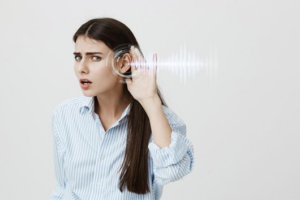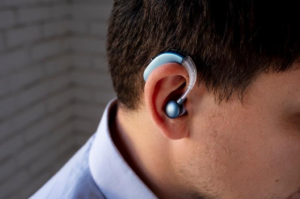
Let’s face it, foam scooter is not a “hot” topic on fitness websites and forums.
Admit it, because warming up / hitching / stretching is not your favorite part of your workout. We all know that stretching has many advantages.
But, at the same time, most people are in a hurry to finish the training at best with a quick hitch, and very few reach the stretch. This approach results in a lack of flexibility and susceptibility to injuries.
Attach a sedentary-hunchy lifestyle to the city dwellers and get posture problems that will surely come to you sooner or later.
Nevertheless, the good news I have. Foam scooters (self-massage rollers) have ceased to be an instrument exclusively of physiotherapists and recovery specialists. Now this item can be successfully used for training purposes and for recovery from stress.
Nowadays, it’s already clear that the concept of “being in shape” is broader than the ability to lift a lot of weight or jog for a long distance. These are important parts of a healthy life, but a balanced diet, a good rest and restorative techniques should be added to them.
If you cannot afford a permanent massage therapist, then buying a foam scooter will largely replace it. Foam scooter is inexpensive, available 24 hours a day, 7 days a week, and your body will say “thank you very much” for Oxymetholone in USA.
Who needs a foam scooter?
Everyone will benefit from the use of foam scooters, regardless of the duration and type of physical activity.
If you exercise regularly (especially with weights) or have problems with posture, then a good foam roller will be one of the best (and cheapest) investments in your body. And even if you don’t exercise, but just spend a lot of time sitting, a foam roller will help to relax your muscles and relieve tension.
Many of us suffer from small problematic muscle nodes, which can cause pain and subsequently lead to big problems and injuries. Using foam scooter allows you to feel these pain points during the rolling process and create pressure that will relax the necessary muscles.
Benefits of Using Foam Scooter
Classes with a foam roller are often called “myofascial relaxation or release.” This means that the foam roller helps to relax the fascia – the most stubborn body tissue that even massage therapists cannot handle. As long as the fascia is tense, the muscles associated with it will be tense.
Foam scooter can be used for different purposes.
- Eliminates clamps, spasms of tissues between muscles and helps to lengthen muscles, improve flexibility and mobility
- Provides blood flow to desired areas before or after training
- Prepares stretching and warming exercises for training
- Accelerates post-workout recovery and reduces retarded muscle pain
- Self-massage and alignment of muscles in the correct position
- Trains core muscles and develops balance skills
- Improves posture
- Eliminates muscle tension
Foam Roller Exercises
Foam roller exercises are easy to learn. In essence, supporting your body, you place the target muscle on top of the foam roller and move it on its surface. The pressure that the weight of one’s own body exerts on muscles and other soft tissues relieves stress and stimulates blood flow. At the same time, problem points of the body are identified.
Rolling on a foam scooter can cause a little pain and you may feel a click in your back – this is normal. You just stretch a squeezed, rigid body. Pay particular attention to pinched or painful areas and roll slowly until the pain is relieved. Then proceed to the next sections.
There are no strict rules for using a foam roller; it is recommended to simply roll around until the unpleasant sensations recede. After practicing with a foam roller you should feel much more crumpled and free.
Below we show examples of exercises with a foam scooter.
Hip extensors
This muscle group is one of the easiest for working out a foam roller. Exercise perfectly liberates the extensor muscles of the thigh and works on problem areas.
- Start with a sitting position, holding body weight on your hands. The foam roller is located under the hips.
- Slowly roll back and forth from the buttocks to the knees, pausing at hard, pinched points.
- Move from side to side to work out all the muscles.
Note: Since the hip flexors have a larger surface compared to, for example, calves, the body weight will be distributed over a larger area and the sensations from working out different muscles can be different. To compensate for this, you can work on the legs in turn, putting one foot on the other to increase pressure. A similar technique can be used with other muscle groups to control the level of pressure that is exerted on the muscles by the foam roller.
Thoracic spine
The thoracic spine is one of the 5 segments of the spinal column, surrounded by the shoulder and chest region. He can keep fit with a foam scooter. The exercise described below is used to avoid drooping shoulders and a rounded back. This positive effect is achieved by improving the mobility of the thoracic spine.
Neglecting the health of the spine leads to poor posture, which not only looks bad, but also leads to lower back pain, neck and injury.
- Place the foam scooter under the upper back (under the thoracic spine).
- The knees are bent, the feet are completely on the floor, hands behind the head, elbows are close to each other.
- Lower your head to the floor and try to roll yourself on the foam scooter, stretching the thoracic spine.
- Slowly roll up and down the spine, pausing in painful parts (do not use in the neck or lower back).
Security
Foam skaters have different density characteristics and the type used should suit your fitness level and body weight. Always perform exercises in a controlled manner.
Using foam scooter may be associated with some discomfort. But it is important to distinguish between mid-level discomfort and potentially dangerous pain.
Important: Foam roller skating should not leave bruises or bruises. After class, your health should become better, not worse.
Before workout / warm up
Using a foam scooter before training is a good way to warm up your body and stretch your muscles to prepare them for an intense workout.
We recommend 5-10 minutes of soft tissue work at the beginning of a workout, before a general warm-up.
After training: rest and recovery
Foam roller will also serve well after training to recover from stress and increase blood flow to the right muscles.
Foam roller can be used for 5-10 minutes on rest days for faster recovery.
In the video below, you can see how the exercises with the foam roller are performed.
Summary
I will formulate the main thoughts of this article:
- Roll over the entire length of the muscle
- Stay in those areas where you feel pain, then continue on.
- The more you do with the foam roller, the better. Ideally – daily, but even 2-3 times a week will allow you to see improvements
- Foam scooter exercises are as much a preventative measure as a rehabilitative one. Therefore, you do not have to wait until everything is bad in order to start classes
Buying a foam scooter
Foam scooters are generally inexpensive, but can vary in quality and performance.
Make sure that you buy a high-quality foam roller, which will retain its shape even after prolonged use and it will have a non-slip surface.
Foam scooters come in different lengths and with different surfaces, can be half and full.
Source: www.fitstream.com
translation: Maria Larina, ISSA fitness trainer



